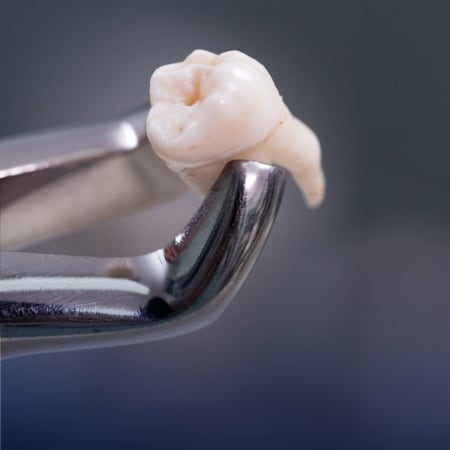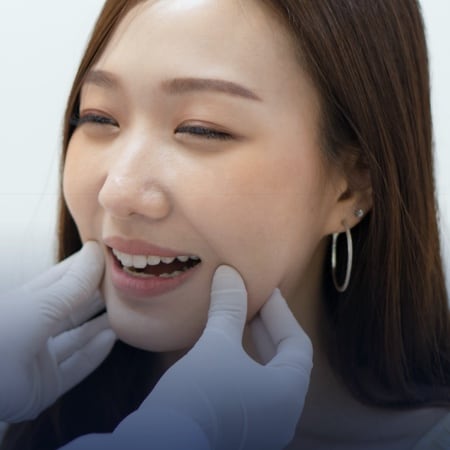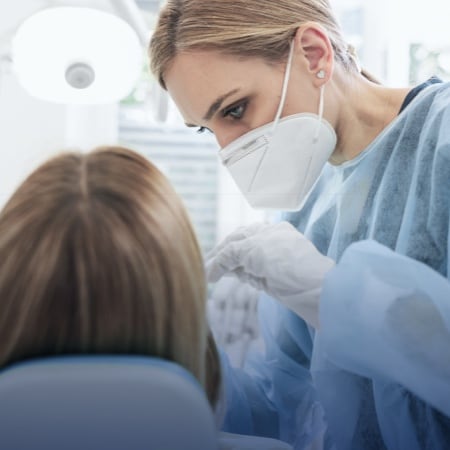Temporomandibular joint disorder, more commonly known as TMJ disorder, affects the hinge connecting your jaw to your skull. This small joint plays a big role in everyday activities like speaking and chewing. When it malfunctions, it can lead to pain and restricted movement, disrupting your daily life.
Living with TMJ disorder can feel like a never-ending loop of discomfort, but it doesn’t have to be this way. While treatment may look different for everybody, some treatment plans may include medication, physical therapy, or mouth guards. In more severe cases, surgery is an option to alleviate pain and improve your quality of life.
Symptoms of TMJ Disorder
TMJ disorder can manifest through a variety of symptoms, which may vary from person to person. Common indicators include:
- Persistent pain in the jaw, especially around the joints
- Tenderness in the face, neck, or shoulders
- Difficulties opening the mouth widely
- A clicking or popping sound when moving their jaw
- Headaches, earaches, and a feeling of fullness in the ears
In some cases, people may experience jaw locking or a reduction in the jaw’s range of motion, which can greatly impact daily activities and overall quality of life.
Common Causes of TMJ Disorders
Understanding the common causes of TMJ disorders is essential in addressing the condition effectively. TMJ disorders can arise from a combination of factors, including physical and psychological influences.
Excessive Clenching & Grinding
Stress often leads to clenching and grinding, putting undue pressure on the joints. This unconscious habit can exacerbate symptoms of TMJ disorder.
Injury or Disease
Trauma or diseases affecting the jaw joint can be a significant factor in developing TMJ disorder. Even something as simple as a fall can disrupt the delicate balance of the joint.
Arthritis
Arthritis isn’t limited to affecting larger joints—it can also impact the TMJ and lead to inflammation and pain. Identifying arthritis early can help manage its effects on your jaw.

Treatments for TMJ Disorder
Effectively managing TMJ disorder often requires a multi-faceted approach tailored to your symptoms and underlying causes. Treatment options can range from home remedies to medical interventions, depending on the severity of the condition and your response to initial treatments.
For those seeking non-surgical approaches, therapies such as physical therapy, occlusal splints, and behavioural interventions often prove to be the most effective and long-lasting. These methods focus on alleviating stress on the jaw, improving muscle function, and restoring proper alignment, which can significantly reduce symptoms over time.
1. Lifestyle Changes
Adopting certain lifestyle adjustments can significantly alleviate symptoms. Patients are encouraged to avoid hard or chewy foods that place additional strain on the jaw. Incorporating relaxation techniques, such as yoga or meditation, can reduce stress levels that may contribute to teeth grinding and jaw clenching. Maintaining good posture also helps decrease tension around the neck and jaw.
2. Physical Therapy
Engaging in physical therapy is an effective way to treat TMJ disorder. A qualified therapist can guide patients through exercises that strengthen jaw muscles and improve flexibility. Techniques may include manual therapy, ultrasound, and other modalities designed to alleviate pain and restore function.
3. Medications
Over-the-counter pain relief medications, such as ibuprofen and acetaminophen, can provide temporary relief from pain and inflammation. For more persistent symptoms, a healthcare provider may prescribe muscle relaxants or anti-anxiety medications to help manage tension in the jaw muscles.
4. Splints & Mouthguards
Dental splints or bite guards can help minimize the impact of teeth grinding and clenching at night. These devices help align the jaw, reduce strain on the joint, and protect the teeth from damage.
5. Injections
In cases where conservative treatments do not yield adequate relief, corticosteroid injections into the joint may help reduce inflammation and provide temporary pain relief. Another treatment option involves Botox injections, which can relax overactive jaw muscles and reduce clenching.
6. Alternative Therapies
Some patients find relief through alternative therapies such as acupuncture, chiropractic care, or massage therapy. These methods may help alleviate muscle tension and promote overall relaxation, contributing to a decrease in TMJ symptoms.
7. Surgery
Surgical interventions are typically considered as a last resort for severe cases of TMJ disorder that fail to respond to other treatments. Procedures may range from arthroscopy, which allows for examination and treatment of the joint, to more involved surgeries, like joint replacement.
Surgery is reserved for severe cases, considered only when:
- Your jaw cannot open
- Your jaw is dislocated and non-reducible
- Severe degeneration is present
- Previous treatments have failed

Explore Your Options for TMJ Relief
It can take some time to find the right TMJ treatment that can work long-term for you, but understanding your condition and your options is the first step. By exploring a range of treatments—from lifestyle changes and natural remedies to professional interventions—you may find a lasting solution for TMJ disorder.
If surgery is the right choice for you, CVOS Oral Surgery can help. Visit our TMJ page or contact us to learn more about how our surgeons can help you reclaim your jaw comfort, and how we can assist with the referral process.









